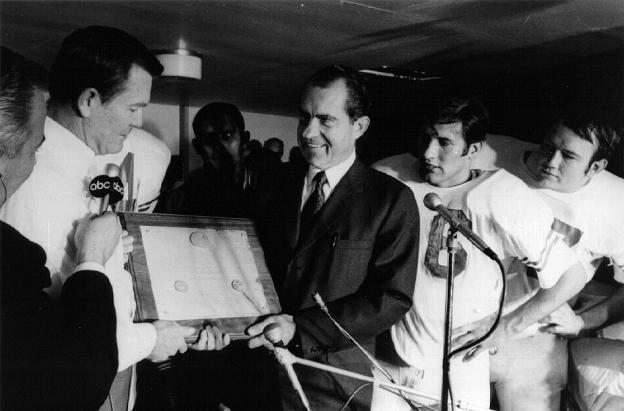


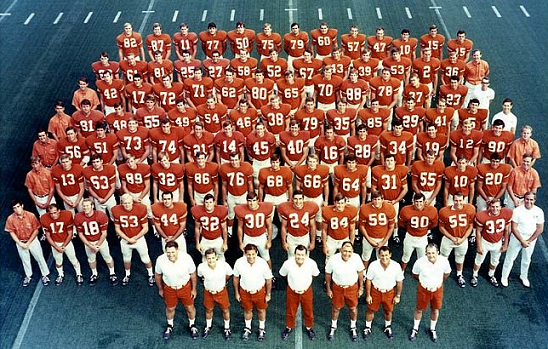
| at California (5-5) | 17-0 | |
| Texas Tech (5-5) | 49-7 | |
| Navy (1-9) | 56-17 | |
| (Dallas) Oklahoma (6-4) | 27-17 | #23 |
| Rice (3-7) | 31-0 | |
| at Southern Methodist (3-7) | 45-14 | |
| Baylor (0-10) | 56-14 | |
| Texas Christian (4-6) | 69-7 | |
| at Texas A&M (3-7) | 49-12 | |
| at Arkansas (9-2) | 15-14 | #9 |
| Cotton Bowl Notre Dame (8-2-1) | 21-17 | #8 |
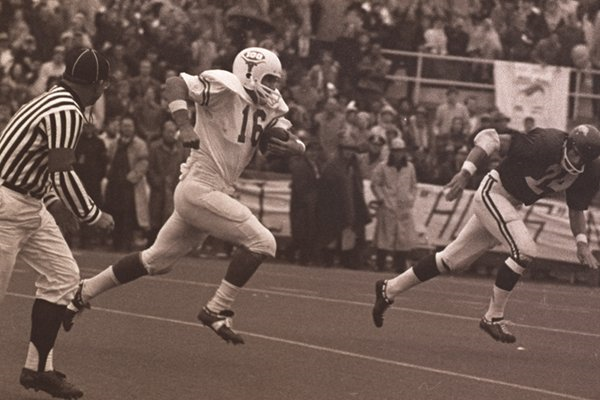
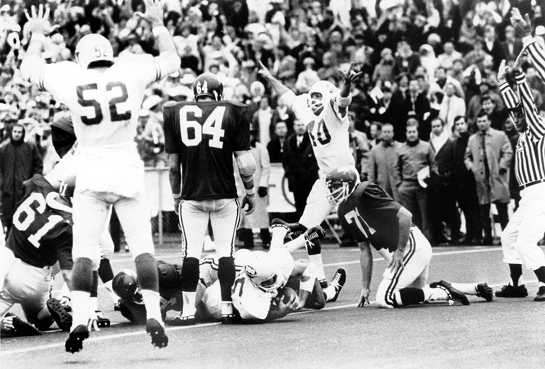
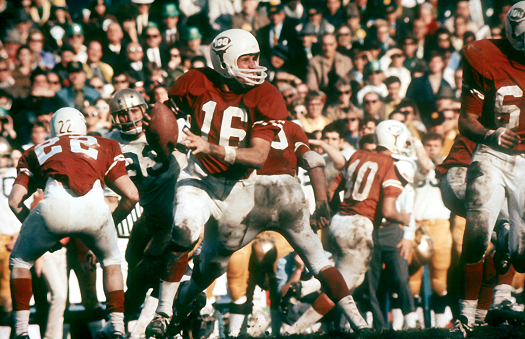
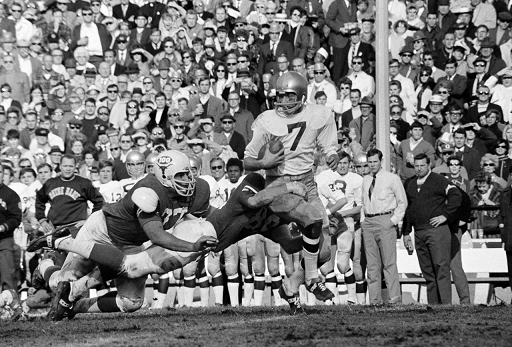
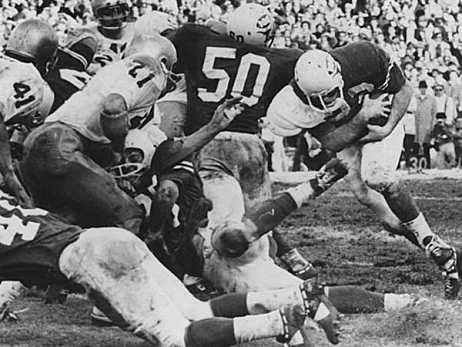
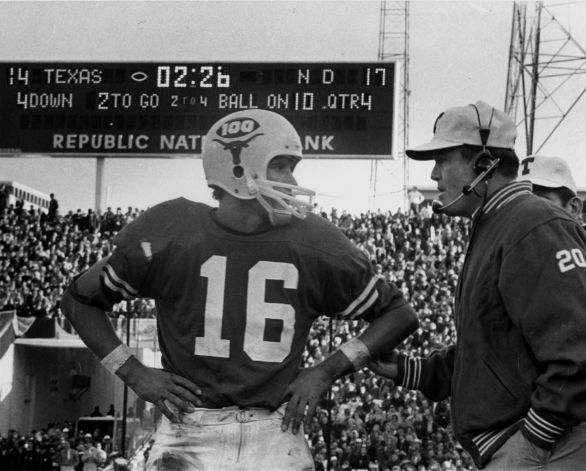
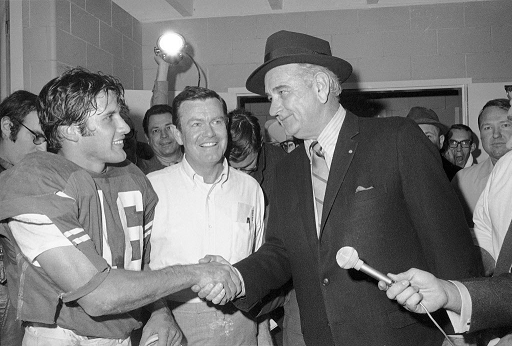
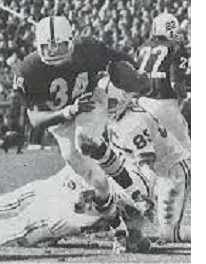
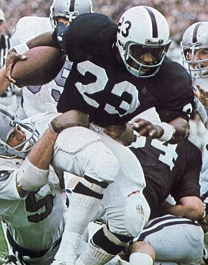
| at Navy (1-9) | 45-22 | |
| Colorado (8-3) | 27-3 | #19 |
| at Kansas State (5-5) | 17-14 | #25 |
| West Virginia (10-1) | 20-0 | #20 |
| at Syracuse (5-5) | 15-14 | |
| Ohio (5-4-1) | 42-3 | |
| Boston College (5-4) | 38-16 | |
| Maryland (3-7) | 48-0 | |
| at Pittsburgh (4-6) | 27-7 | |
| at North Carolina State (3-6-1) | 33-8 | |
| Orange Bowl Missouri (9-2) | 10-3 | #5 |
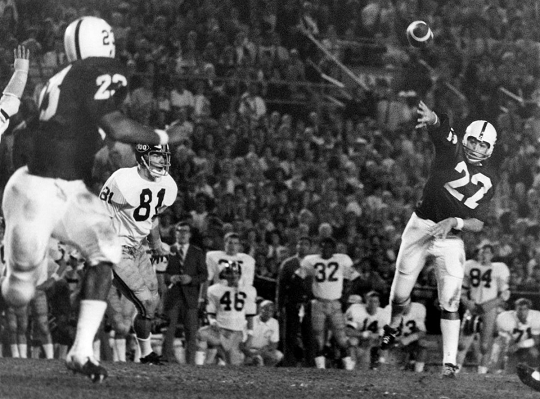
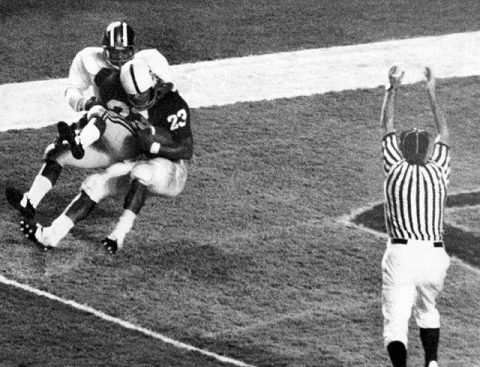
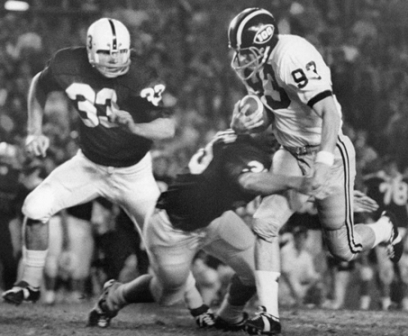
| Texas 11-0 | Penn State 11-0 | ||||||||||||||||||||||||||
|---|---|---|---|---|---|---|---|---|---|---|---|---|---|---|---|---|---|---|---|---|---|---|---|---|---|---|---|
|
|
||||||||||||||||||||||||||
| 1) Helms Billingsley (math system) Coaches Poll FWAA Football News NFF |
5.0 |
| 7) National
Championship Foundation AP Poll |
4.8 |
| 9) College Football Researchers | 4.6 |
| 10) Sagarin
ELO-Chess (math) Berryman (math) |
4.4 |
| 12) Poling (math) | 4.3 |
| 13) Dunkel (math) Sagarin (math) DeVold (math) |
4.0 |
| 16) Litkenhous (math) | 3.0 |
| 17) Matthews (math) | 2.5 |
| 1) National Championship Foundation | 4.69 |
| 2) Billingsley (math system) | 4.67 |
| 3) Houlgate (math) | 4.53 |
| 4)
College
Football Researchers Association |
4.48 |
| 5) Sagarin-ELO (math) | 4.46 |
| 6) DeVold
(math) |
4.44 |
| 7) Poling
(math) |
4.38 |
| 8) Helms Foundation | 4.35 |
| 9) Boand (math) | 4.27 |
| 10) Sagarin (math) | 4.24 |
| 11) Litkenhous
(math) |
4.22 |
| 12) AP Poll | 4.08 |
| 13) Dunkel (math) | 4.05 |
| 14) Williamson (math) | 3.86 |
| 15) Berryman (math) | 3.17 |
| 16) Coaches Poll | 3.05 |
| 1) Boand (math system) | 4.26 |
| 2) College Football Researchers Association | 4.22 |
| 3) Poling (math) | 4.11 |
| 4) Helms | 4.09 |
| 5) Sagarin-ELO (math) | 4.06 |
| 6) National Championship Foundation | 3.96 |
| 7) Dickinson (math) | 3.49 |
| 8) Houlgate (math) | 3.35 |
| 9) Billingsley (math) | 3.34 |
| 10) Sagarin (math) | 3.28 |
| 11) Parke Davis | 2.77 |
| 1) Houlgate (math system) | 4.5 |
| 2) Helms | 4.3 |
| 3) Parke Davis | 4.2 |
| 4) National Championship Foundation | 3.7 |
| 5) Billingsley (math) | 3.6 |